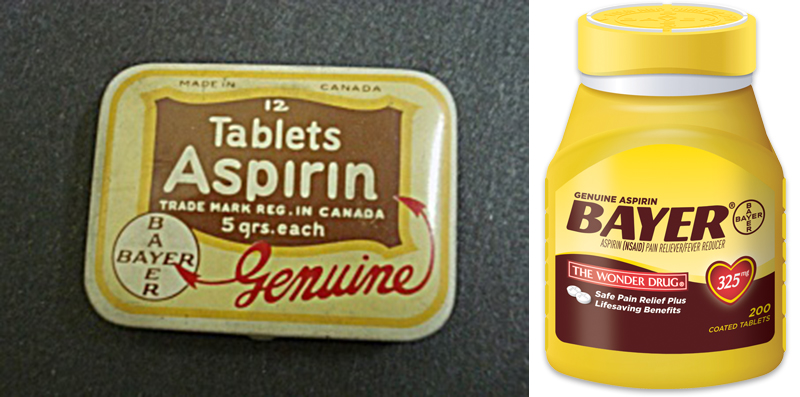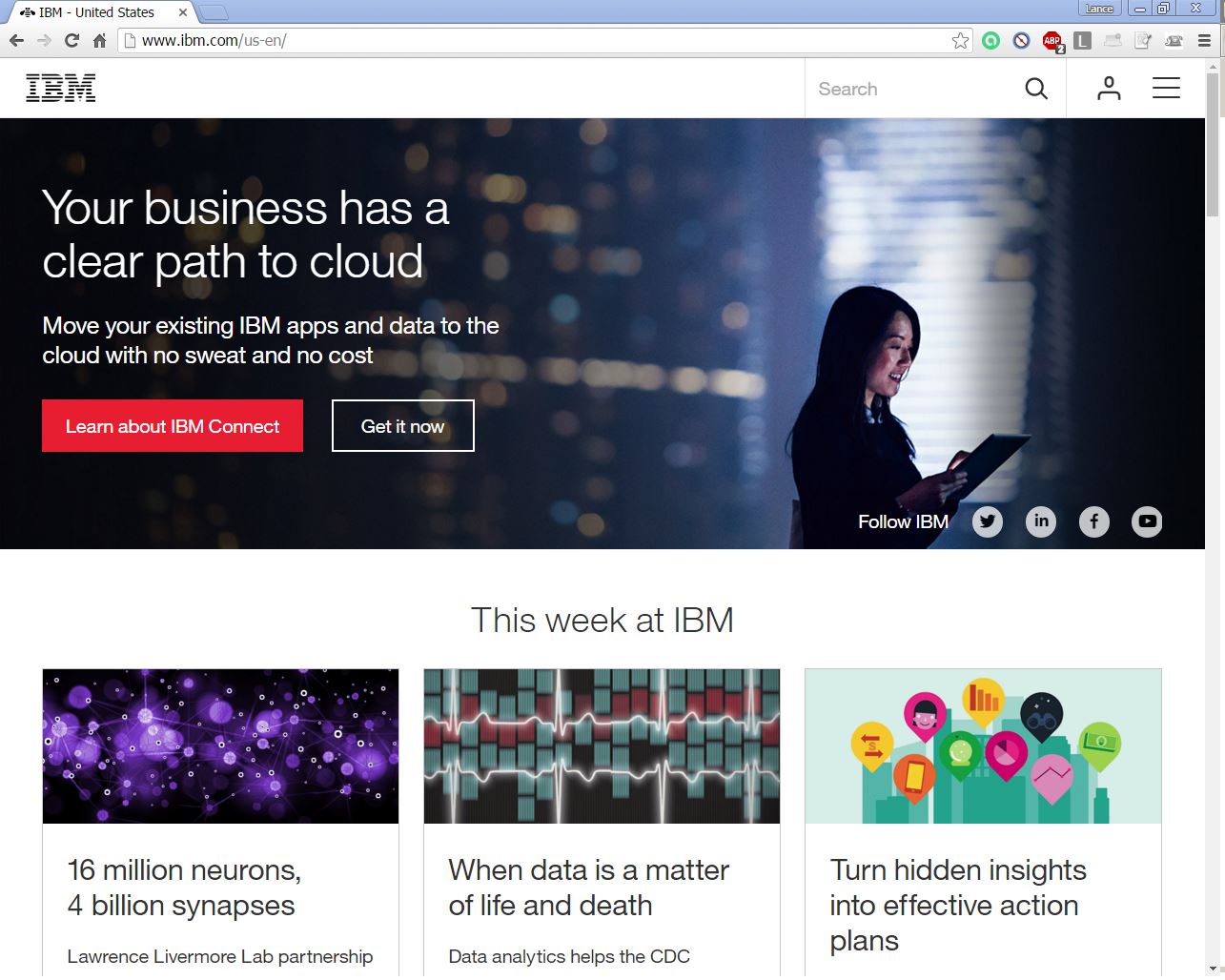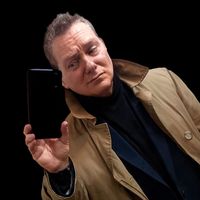5 ways to measure your branding success
How to know if your touchy-feeling designs have increased sales.
Show of hands: who here really knows what branding is? Relax, we're grading on a curve. Most of us are just a bit vague on what branding is, largely because it can mean different things in different applications.
In once sense, branding is an ancient custom. Ruling families paraded their crests (i.e. logos) as far back as Egypt. By comparison, the modern concept of 'product' branding is still relatively new. For example, if you look at ads and packaging of Bayer aspirin from just a hundred years ago, it had the word 'ASPIRIN' large at the top. And the brand's name and logo was shown quite small. Contrast this to today's packaging where the brand name – in this case 'Bayer' – is overwhelmingly dominant.

That transition from one extreme to the other epitomizes the evolution of world class branding. Bayer first created the retail market for aspirin, and then went on to dominate it. Other brands have even a tighter control over their markets. Look at how people ask for a 'Kleenex' instead of a tissue, or go 'Rollerblading' rather than inline skating. Market domination is often the spoils that go to the market pioneers. But not always.
With or without such domination, branding is done by associating the brand with the needs of that market. So when the consumer thinks of a need, they then think of the brand as the solution. This brand association is accomplished using design, words, emotional triggers, and to a lesser degree, logical arguments.
As creatives, we love branding work because it allows us more freedoms than the more goal-oriented call-to-action and sales oriented campaigns do. But that doesn't mean branding should be seen as a creative blank check.
How do we measure our branding success?
A sales person can simply count how many cars he/she sold that day. Branding experts have a much harder time in measuring success. After all, while we all acknowledge that increased brand 'awareness' should lead to increased sales, there isn't the same direct cause-and-effect connection that sales people enjoy.
Branding experts have a much harder time in measuring success
Branding success – or failure – is usually measured across a much larger arch of time. Months and years, rather than days and weeks. This means branding requires a commitment of resources and attention. Because of this, many companies with less sophisticated leaders tend to let branding take a far back seat to daily sales. In the long run, such short-sightedness can bite one in the can.
Get the Creative Bloq Newsletter
Daily design news, reviews, how-tos and more, as picked by the editors.
But most major companies today are quite sophisticated about the need for good branding. And there are a range of job positions today, like 'Brand Manager' that didn't exist a generation ago. But with this sophistication comes the expectation of delivering the goods.
So how do you convince a client to make that longer term investment in their own branding? That, my friends is a hard nut to crack. But learning how to measure branding's success is a first step!
01. What to measure?
The first step in figuring out HOW to measure, is to figure out WHAT to measure. Since branding can mean different things to different people, you have to decide which metrics you wish to increase. Branding can increase sales, it can increase mentions in the media, it can increase online chatter, it can increase web traffic.
Example
By first agreeing what areas are most important, the branding efforts can be tailors to hit those targets first. This will yield better results than branding efforts that try to be all things to all people.
02. It's easier online
Traditional advertising has always been hard to track. Branding via traditional advertising, is even harder. But with online advertising we are able to make tenable connections a lot easier than before. Because of this branding has, and may continue to have, a comfier home online.
Example
Online we have clicks, tracking (cookies, etc.) and search query rises and falls. All this can help us see how our branding ads are doing.
03. Company website
Websites are created for a wide range of reasons today. A company website is often created to: be an online brochure, sell a product line, or as an ecommerce site. Some of these applications make it easier or harder, to incorporate effective branding. Still, in all cases your website is the single best place in the world to brand your company and products. Use it right!
Obviously, on a website that we control, we are able to learn a tremendous amount about the people that visit us. Do they visit the 'About Us' and other branding items? How long do they stay there? After, do they go on to the products page, and if so, do they buy? What is the rate of purchase compared to site visitors that never read the branding pages? A process called 'Attribution' modeling is one flexible way to track a visitor's time on a website.
Example

Good branding on a company's website means clearly communicating who they are, and what they offer. Traditionally known for having good branding is IBM. They have always given companies the tools to do business better. And their current website carries on this tradition. Look at how easy they make it to see what they offer, and learn more.

By comparison, a website like Amazon.com shows terrible branding. But hey, when you become a world famous gazillion dollar company, you can break some rules.
04. Your USP can help track branding
For the consumer, branding is usually more about feeling than thinking. But not always. If your brand has a Unique Selling Proposition (USP) that is a significant part of your brand image, than the measurability of that USP can be an indirect measure of your branding's success. Examples of this include Volvo, the safety car. Their commitment to producing the safest cars available was certainly not something that happened over night. Nor did sales increase from their efforts overnight. But over time, that fact became not only their best selling feature, but also their best branding as well.
Example
By leveraging trackable components to your brand image, you can see how many people care about these items. Do more people care about car safety now than they did a year ago? This will give an indication of how well such brand images should expect to do. This in turn, can be compared to overall sales trends.
05. Words have power – especially online
Here's another way to test your branding, or even how an enhanced branding initiative might help your goals. By using more branding-like words in your SEO efforts, and even in low-cost Google Words ads, we can test to see how many people are keyed into more brand-aware thinking. More pointedly, how many are keyed into the branding elements we are pushing.
Example
Let's take two hypothetical flower shops. The first is 'Acme Flowers', which has a website that is all ecommercey, and has SEO keywords that include just basics like 'flower', 'rose', etc. Then there is 'Francesca's Flowers' with a well branded website and SEO words that include 'love', 'passion', 'make-up', 'apology', 'proposal', in addition to the more normal keywords.
The extra branding SEO words will bring Francesca's shop to a different range of searchers. If her website is also well branded, then it might be just the match they are looking for. And all of this is trackable, and measurable!
Beyond the basics
Branding and the ways of tracking it is an endless topic. Those of us involved in the creative side of branding, and those creating web designs should all have at least an understanding of the ways what we do, will get used and measured. Here are some worthwhile links:
- Wanna learn about Attribution Modeling? Check out HubSpot's blog.
- Entrepreneur Magazine had this article which breaks it down to just three metrics
- Three more articles. From Google, Brandwatch and the irreverent Avinash Kaushik

Thank you for reading 5 articles this month* Join now for unlimited access
Enjoy your first month for just £1 / $1 / €1
*Read 5 free articles per month without a subscription

Join now for unlimited access
Try first month for just £1 / $1 / €1

Lance Evans is creative director of Graphlink Media, a boutique creative marketing agency that specialises in building brands and has worked with such high-profile clients as Olive Garden, Miller Beer and AMEX. Lance was an early adopter of digital tools, and was on the original beta team for Photoshop. Lance has written for Creative Bloq on a wide range of topics, from technical photography tips to the ins and outs of branding.
